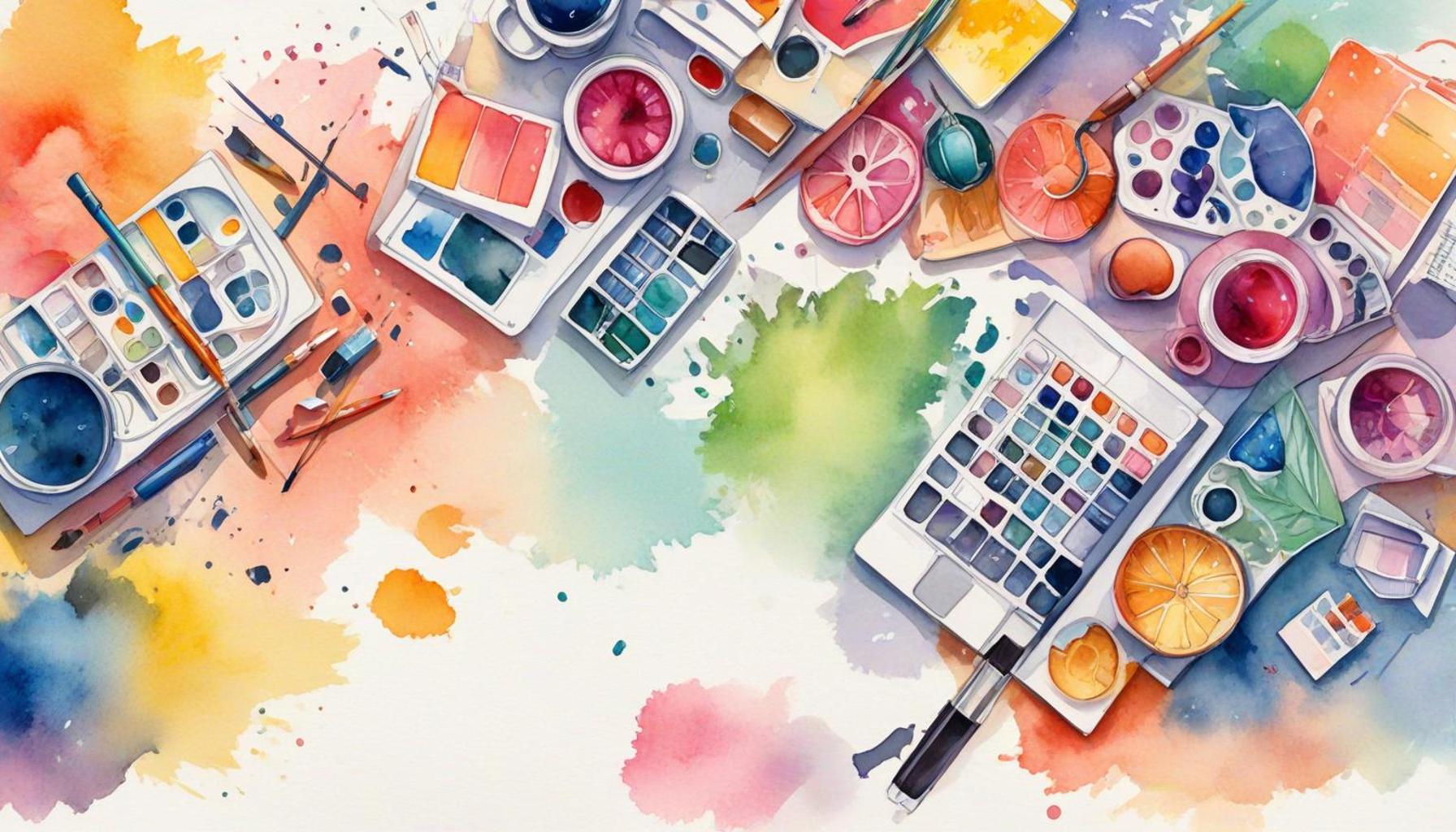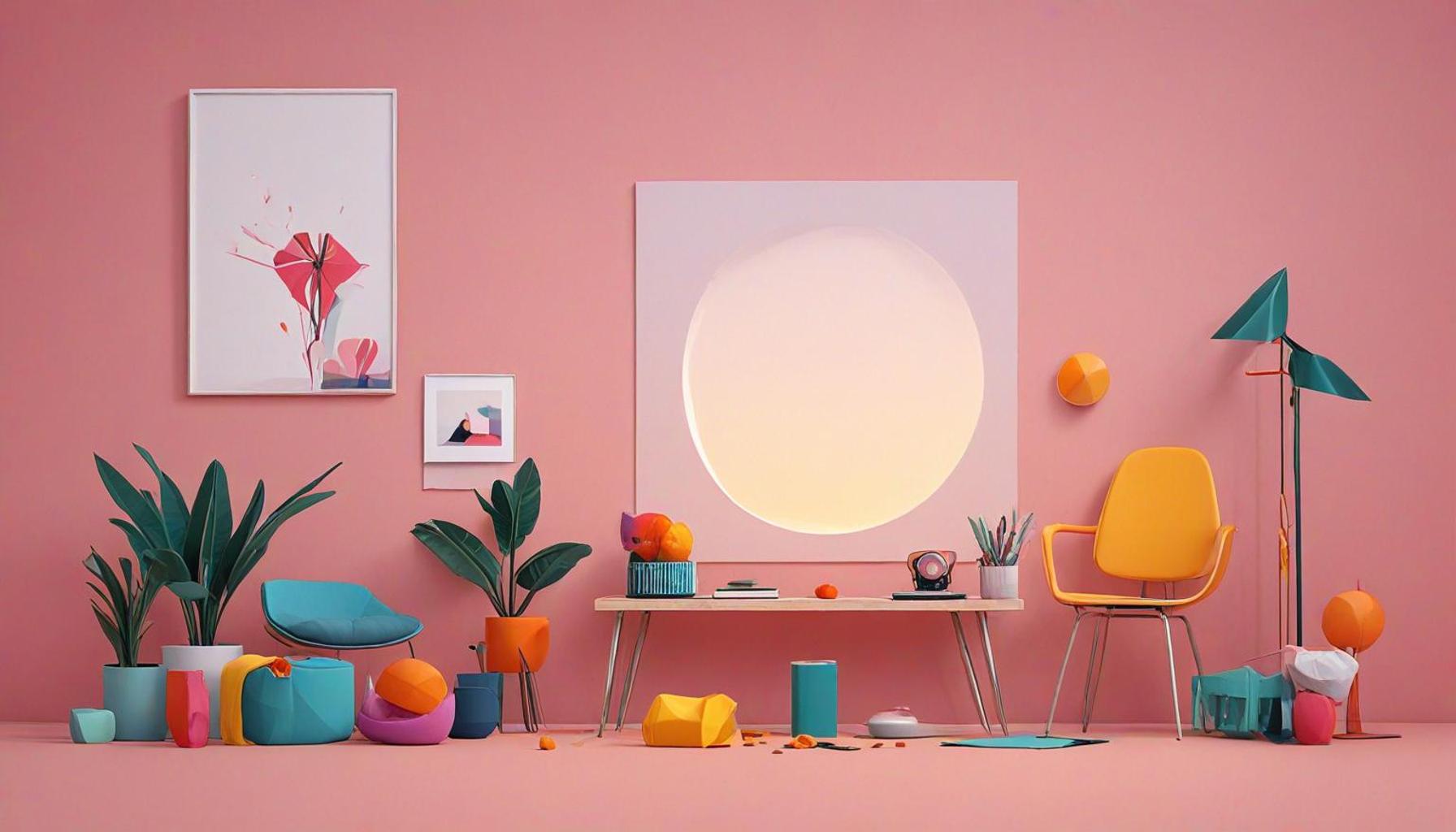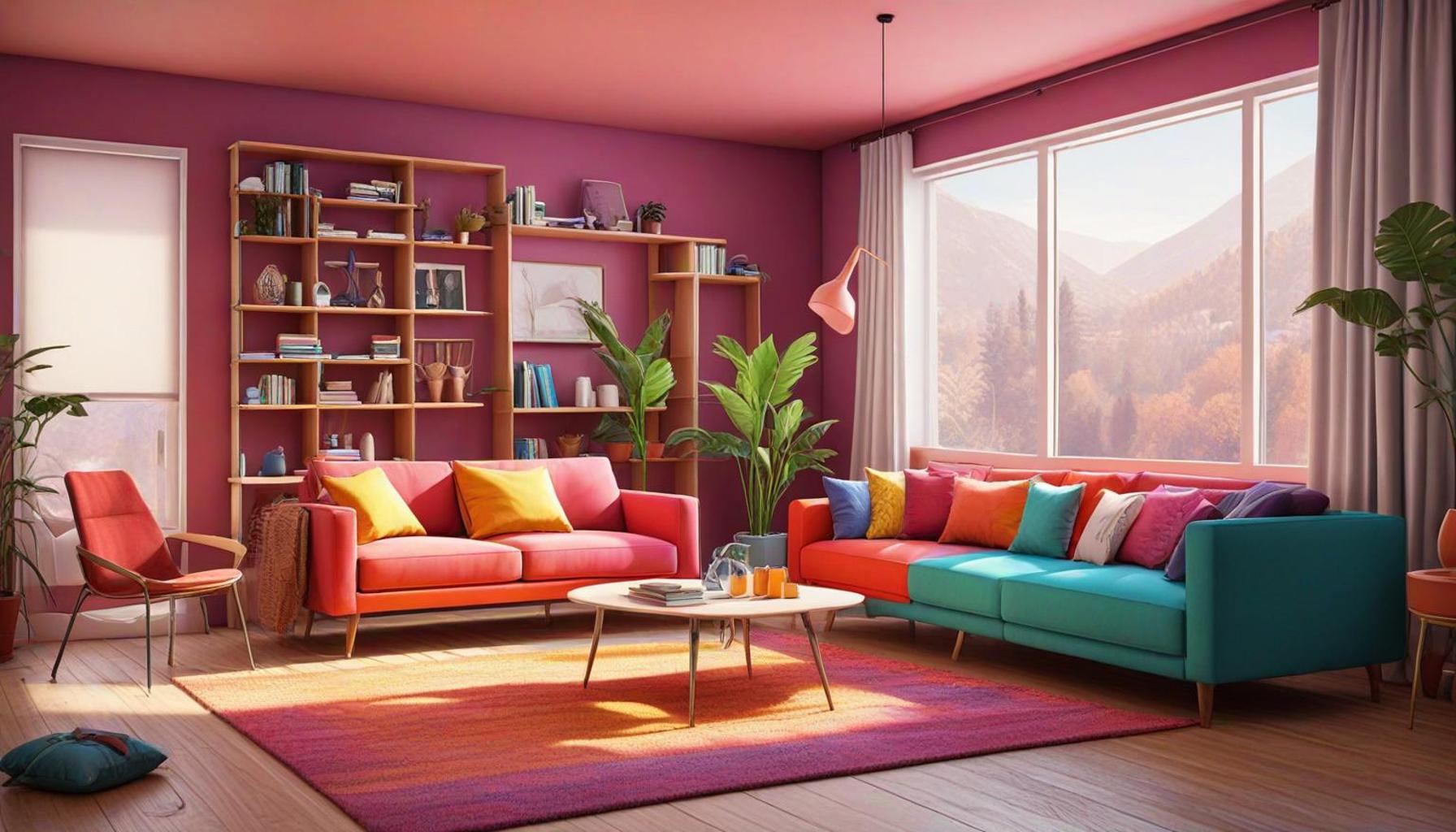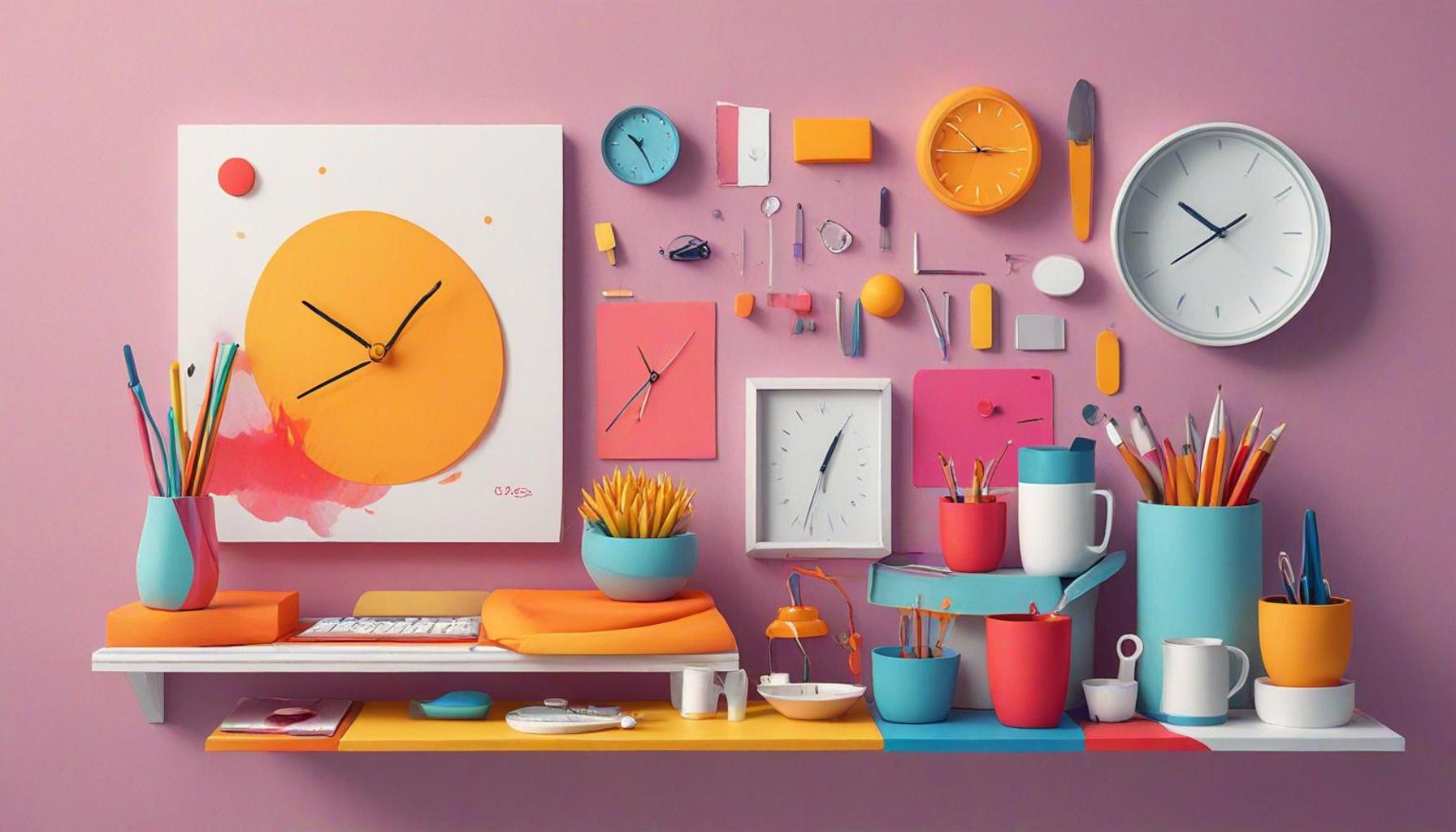Transform Personal Organization with Intentional Design for Boosted Productivity

Introduction
In an age where distractions are abundant and time seems fleeting, the quest for improved productivity has become increasingly paramount. Intentional design in personal organization emerges as a powerful solution, aligning closely with the principles of minimalism—a philosophy focused on simplicity and clarity.
This approach isn’t merely about tidiness; it’s about creating a purposeful environment that fosters efficiency. By thoughtfully curating your space and tasks, you invite a sense of intentionality that can dramatically reshape your daily routines. This is a practice that not only simplifies your physical surroundings but also declutters your mental spaces, allowing for better concentration and creativity.
The Benefits of Intentional Design
Consider how a well-organized desk can lead to a more focused mind. Reducing clutter not only enhances focus, enabling you to immerse yourself in tasks without the constant pull of unnecessary distractions, but it also has a tangible psychological effect. A tidy environment evokes a sense of order and tranquility, influencing mood and productivity levels.
Furthermore, intentional design promotes clarity in decision-making. With fewer distractions and a clearer view of your goals, decisions are no longer a burdensome task but rather a streamlined component of your daily workflow.
This approach also encourages the development of proactive rather than reactive habits. When your personal space and schedules are designed with intention, you are more inclined to anticipate challenges and prepare for them, rather than constantly reacting to unforeseen hurdles.

- Enhances focus by reducing clutter
- Promotes clarity in decision-making
- Encourages proactive rather than reactive habits
Exploring Further
As we delve deeper into this article, you will discover the top 5 strategies that exemplify how intentional design can revolutionize your personal organization and elevate your productivity to new heights. Expect to uncover methods that are both innovative and practical, helping you transform your environment into a launchpad for achieving your personal and professional goals.
DISCOVER MORE: Click here to enhance your workspace
Top 5 Ways Intentional Design Can Transform Personal Organization and Boost Productivity
Intentional design is a powerful tool that can dramatically enhance personal organization and productivity. This approach focuses on curating environments and systems deliberately to achieve optimal efficiency and satisfaction. This article ranks five key ways in which intentional design can fundamentally transform how we organize our personal and professional lives. Let’s begin our countdown!
5. Simplifying Choices
One of the significant impacts of intentional design is the simplification of choices. In an age of information overload, the sheer number of decisions we face daily can be overwhelming. Intentional design helps to streamline these choices, allowing individuals to focus on what truly matters.
For instance, designing a workspace with fewer, more strategic objects can limit distractions that would otherwise hinder productivity. Consider organizing your desk with only essential tools and visual elements that inspire creativity. This not only reduces clutter but also fosters mental clarity, making it easier to make decisions efficiently. Furthermore, streamlining choices extends beyond physical items. Intentionally limiting options in digital spaces, such as minimizing browser tabs, can boost focus and efficiency.
Additionally, creating a daily routine that emphasizes the most impactful tasks can significantly reduce decision fatigue. Techniques like the “Two-Minute Rule” encourage you to take quick actions for simple tasks, resulting in less mental strain and more time to focus on high-priority activities. This approach aligns with the concept of “decision minimalism,” enabling you to conserve cognitive resources for significant decisions.
4. Creating Functional Spaces
Functional spaces are designed with the user in mind, promoting an efficient flow of activities. This aspect of intentional design not only enhances the physical layout but also encourages better productivity. An organized environment minimizes wasted time searching for items or navigating cluttered areas.
Consider your home office as an example. By assessing elements such as desk placement, seating comfort, and lighting, you can create a setup that promotes focus and minimizes distractions. Integrating modular furniture can allow for flexibility, adapting the space to varying tasks and ensuring it remains conducive to high performance. This adaptability is crucial in environments where different projects require distinct settings.
Moreover, adding storage solutions that maximize vertical space or hidden compartments can further contribute to a streamlined work area, enhancing both functionality and organization. Innovations in storage design, such as under-desk drawers or wall-mounted shelving, can free up essential workspace, allowing the user to maintain a tidy and efficient environment.
3. Fostering Mindfulness
Intentional design goes beyond aesthetics and functionality; it creates an environment that fosters mindfulness. Mindfulness in the workplace has been shown to improve focus, reduce stress, and enhance overall productivity.
Incorporating elements such as plants, art, or calming colors can significantly influence mood and creativity. Studies indicate that exposure to greenery and natural light can reduce stress levels and enhance cognitive functioning. Environments designed with these natural elements not only enhance well-being but also inspire greater engagement and innovation. The inclusion of art that reflects one’s values or aspirations can serve as a continual source of inspiration.
Establishing a clear boundary between work and leisure spaces is also essential for cultivating mindfulness. Intentional design ensures we dedicate specific areas for work tasks, thus making it easier to switch between productivity and relaxation. This separation can lead to reduced procrastination and improved work-life balance, as individuals are more capable of fully immersing themselves in their current activity.
2. Maximizing Digital Organization
In an increasingly digital world, intentional design extends into our virtual spaces as well. By creating a streamlined digital environment that mirrors your organizational principles, you can significantly improve productivity.
Here are some strategies for maximizing your digital organization:
- Utilizing cloud-based applications to centralize important documents ensures easy access and collaborative potential. Tools like Google Drive or Dropbox enhance your ability to work from anywhere.
- Establishing a standardized naming convention for files and folders can save time and reduce confusion when searching for information. A system with clear categories and intuitive naming can simplify file retrieval.
- Regularly conducting digital decluttering sessions to remove unnecessary files helps maintain a clean and efficient digital environment. Regular maintenance can prevent your digital space from becoming overwhelming.
An organized digital workspace facilitates easy access to resources and information, paving the way for improved efficiency and effective communication. Employing productivity apps that allow for task management and time tracking can help maintain focus. Combining this focused approach with clear intentions allows you to stay on track and achieve your goals with less effort.
1. Enhancing Overall Aesthetics and Mood
The most powerful transformation that intentional design offers is the enhancement of overall aesthetics and mood. A well-designed environment can inspire motivation, creativity, and productivity. When spaces are harmonized in a way that reflects personal values and preferences, individuals can thrive.
Consider the importance of color psychology and how different colors can evoke specific emotions. Designing a workspace with inspiring artwork, a vibrant color scheme, or even personalized decor can contribute positively to an individual’s mental state. Research indicates that a stimulating environment significantly boosts creativity and problem-solving abilities. For example, blue hues are often linked to tranquility and focus, enhancing concentration, while greens encourage harmony and efficiency.
Moreover, creating a cozy, inviting atmosphere with natural light, plants, and comfortable furnishings encourages a welcoming space that can lead to heightened productivity and joy in daily activities. This focus on aesthetics is not merely superficial; it fundamentally shifts how we interact with our surroundings, often leading to a more fulfilling and productive life. The incorporation of sensory elements like textures, scents, or sounds can further customize the environment, making the space feel uniquely yours.
In conclusion, the principles of intentional design hold immense potential for transforming personal organization and enhancing productivity. By understanding and applying these concepts, individuals can craft environments that are not only efficient but also deeply satisfying, ultimately leading to enriched personal and professional experiences. The design choices we make influence not just how we work, but how we live, making intentional design a vital element of modern productivity.
| Category | Details |
|---|---|
| User-Centric Design | The focus on the user’s needs drives effective organizing systems that enhance productivity by ensuring that the tools used are intuitive and aligned with individual workflows. |
| Visual Organization | Incorporating visual aids helps clarify priorities and tasks, making it easier for individuals to track progress and achieve their goals with minimal distractions. |
| Adaptable Systems | Dynamic organizational structures allow for changes in workflow and style, which not only keeps the workspace fresh and engaging but also promotes continuous improvement and adaptation. |
| Goal-Oriented Design | Tools designed with specific objectives in mind can streamline operations, thereby minimizing wasted time and enhancing focus on the tasks at hand, ultimately driving better outcomes. |
DISCOVER MORE: Click here to learn how to simplify with children
FAQs on Intentional Design and Personal Organization
How does intentional design differ from regular organizational methods?
Intentional design involves deliberately structuring your environment, tools, and workflows to align with your personal goals and needs. Unlike regular methods that may focus on general organization, intentional design tailors the approach specifically to your lifestyle, ensuring that each element in your space serves a purpose that directly enhances productivity.
Can intentional design really improve my productivity sustainably?
Yes, intentional design can have a profound and sustainable impact on productivity. By creating a workspace that minimizes distractions and highlights essential tasks, individuals tend to focus better and work more efficiently. Studies suggest that a well-organized and thoughtfully designed environment can boost concentration and reduce decision fatigue, leading to sustained improvement over time.
What practical steps can I take to begin with intentional design?
Start by evaluating your current environment and identifying areas that cause frustration or slow down your process. Use that insight to remove unnecessary clutter and thoughtfully arrange items in a way that centers around your personal workflow. Incorporate elements that inspire and motivate you, ensuring that the setup remains a living entity, adaptable to changing needs. Regularly reassess and adjust as necessary to keep the design aligned with your goals.
Is there a particular design style recommended for enhancing productivity?
While there’s no one-size-fits-all style, minimalism often resonates well with productivity enhancement due to its emphasis on simplicity and clarity. However, it’s crucial to choose a style that reflects your personal preferences and comfort, as a space that feels intuitively supportive to you is more likely to foster creativity and productivity. Experiment with different styles and elements until you find what resonates best with your personal workflow.
How can I measure the success of implementing intentional design in my organization?
Success can be measured through both qualitative and quantitative metrics. Qualitatively, you might notice reduced stress and a clearer mind, while quantitatively, you could track the time taken to complete tasks or the number of goals achieved over a set period. By keeping a record of these metrics, you can determine whether the changes have led to increased efficiency and adjust your approach based on what works best.
DIVE DEEPER: Click here for tips on a smooth move
Conclusion: Transforming Personal Organization through Intentional Design
The exploration of intentional design unveils its profound impact on personal organization and productivity. As highlighted throughout the article, implementing a strategic approach allows for a streamlined and efficient way to manage both our spaces and time. This transformation not only declutters physical environments but also unburdens the mind, leading to enhanced focus and creativity.
Key takeaways from our discussion include the understanding that minimalism doesn’t just apply to reducing physical possessions; it’s about designing environments that serve a purpose. Prioritizing items that add value, grouping similar tasks, and setting boundaries are all ways to incorporate intentional design into everyday life. Doing so helps eliminate distractions and creates an atmosphere conducive to productivity.
Furthermore, the practice of reflecting on one’s values and goals is crucial. By aligning organizational strategies with personal objectives, individuals are empowered to make coherent and effective decisions. This alignment not only simplifies daily routines but also fosters long-term fulfillment and efficiency.
Given the fast-paced and often overwhelming nature of modern life, the principles of intentional design offer a refreshing antidote. By embracing these methods, individuals can achieve a balanced, intentional lifestyle that supports their ambitions. As minimalism continues to gain traction, the integration of intentional design becomes ever more pertinent.
While the journey of transforming personal organization may require effort and introspection, the benefits far outweigh the initial discomfort. By adopting these principles, individuals are not only optimizing their environments but also paving the way for a more productive and fulfilling life. Readers are encouraged to delve deeper into these strategies and permit themselves the grace to experiment and adapt. In doing so, they may discover a newfound satisfaction and efficacy in their daily pursuits.


